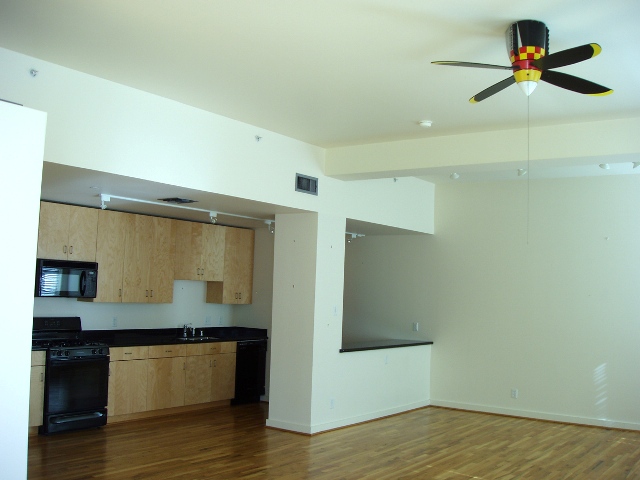1. Build upwards
One of the most useful techniques for maximising space in your kitchen is to think ‘height’, not ‘width’. Building upwards helps you utilise space that would probably never be used in the first place, whereas having too many cupboards and appliances on the floor can make your kitchen look too cluttered.
Use your space efficiently
Rather than having a separate fridge and freezer next to each other, why not buy an ‘extra tall’ fridge-freezer with more storage space for your fruit, vegetables and frozen foods? If you are lucky enough have very tall ceilings, you can utilize them by building overhead shelves to store all your other kitchen items like cookery books, big pans, casserole dishes or anything that takes up a lot of space.
2. Exploit storage space
Many people who complain of having small kitchens often don’t realise that they may have ample storage space underneath their cupboards. This is where you can store any items that you seldom use or only need on a seasonal basis. For example, you may have a bulky kitchen fan that you only use in the summer months, or you might have a big food processor or coffee maker that you only use once a month or less.
Create an illusion
Even if you think you probably have too much clutter, keeping it hidden away can create the illusion that it does not exist. An overhead cupboard over an existing counter can also provide extra storage space for crockery and cooking utensils, although it may be more cost effective to simply install a kitchen utensil hanging rail.
3. Maximise space for food preparation
If you’re an avid cook you need plenty of space to prepare your meals. Likewise, if you have children and you regularly invite friends and relatives for dinners and parties, you need enough space to be able to prepare all your ingredients and dish out food. Give yourself a large, clear surface area for chopping vegetables, assembling dinner plates and weighing your ingredients. To put it simply, a kitchen is not a kitchen if there is no space to prepare food, regardless of its size or design.
4. Integrate your kitchen with a minimalist look
A great way to create the impression of greater space in a small kitchen is to ‘simplify’ your design and provide less information for the eyes. For example, consider building cupboards without door handles so that they all blend together, opt for a built-in fridge and freezer, or choose a built-in dishwasher and washing machine.
A consistent design makes a functional kitchen
The more you integrate your kitchen items, the more efficiently you can maximise space. A consistent kitchen design also looks clean, practical and aesthetically pleasing, and can function as a much more relaxing living environment.
Finally – get some professional advice before you purchase your new kitchen
Home improvement professionals can often spot potential issues or think of innovative ideas that many homeowners may not have considered when brainstorming a new kitchen design for their homes. Don’t hesitate to talk to the specialists to get some expert advice to make sure you can take full advantage of your kitchen space by using the most innovative design techniques.
Sharon Brunton is the Co-Owner of Bruntons Home Improvements based in Chelmsford, Essex which specialises in the project management and installation of new kitchens and bathrooms for your home.
